The first meeting this morning of the newly formed Emergency Committee on the Impacts of Federal Workforce and Funding Reductions was very troubling in its warnings, analyses and implications. See below for video, the meeting agenda (including a powerful presentation by Clark Mercer – formerly Gov. Ralph Northam’s Chief of Staff, now Executive Director of the Metropolitan Washington Council of Governments and Joe Flores of the Virginia Municipal League, among others), and a few highlights, including:
- Per Clark Mercer, as many as 315,000 federal workers who *reside* in Virginia – 10% of Virginia’s total workforce, mostly concentrated in Northern Virginia and Hampton Roads. The share of federal workers in localities’ workforces ranges as high as 23% in Arlington County (over 30% in Crystal City), 20% in Alexandria, 16% in Fairfax County (38% in Franconia), 15% in Prince William County and 9% in Loudoun County.
- There are also about 400,000 contracted employees in the National Capital Area. And then there’s an important “multiplier effect” (between 0.4x and 3x) of these employees’ incomes on local businesses, particularly in the service sector.
- Mercer points out that while Northern Virginia, “where the bulk of Virginia’s federal workers reside, generates 42% of Virginia’s GDP, larger than 24 states and the District of Columbia,” despite making up just 5% of Virginia’s geographic area.
- Reduction in Force (RIF) impacts to date include: 75,000 buyout offers accepted, 220,000 probationary employees (not just new employees, also can be mid-career employees who got a promotion or a raise). Then there could be formal reductions in force, and there’s also an executive order stipulating that for every one new federal employee hired, four have to depart from federal service. Crazy.
- An unemployment scenario based on stated goals of the “DOGE” effort – as much as a 75% reduction in force of federal workers! – show a spike in the DC Metro area from the current 2.8% unemployment rate to a whopping 9.6% (from 2.9% to 5.4% in VA Beach/Chesapeake/Norfolk, from 2.6% to 4.1% in Richmond, from 2.4% to 3.9% in Roanoke). This just includes federal employees, by the way, not contractors or multiplier effects, so this could be utterly disastrous, even worse than during “the height of COVID,” as Clark Mercer puts it.
- There are also issues with cuts to federal expenditures on defense, programs like SNAP and Medicaid, transportation formula adjustments, evironmental initiatives and DEIA programs, etc. Virginia could also be really hit hard by these cuts…as well as by a cessation (or even outflow) of immigration into the Commonwealth.
- As the Virginia Municipal League presentation made very clear, Virginia localities are facing high levels of uncertainty – with “unclear, contradictory and confusing” federal guidance and “conflicting reports and guidance” on “the funding freeze and personnel actions” – including scope and length of freezes – making planning much more difficult and “overwhelming local governments.” So now “everybody is scrambling,” thanks to the chaos flowing from the Trump/Musk administration. Localities are having a great deal of difficulty to pull together a budget given all the uncertainty. And there’s a “palpable sense of anxiety” among localities. Ugh.
- Federal funding accounts for about 10% of local revenues, with some localities (e.g., Marion, Bluefield) getting over 30% of their revenues from federal monies, and others (Bedford, Wise, Tazewell, Culpeper, Pulaski, Wise, Bristol, Bridgewater, Martinsville, Galax) getting over 20%. Note that the most heavily dependent localities on federal monies are places that went HEAVILY for Trump, are deep-“red,” etc. Ironic?
- “Economists report that the loss of one federal employee can negatively impact 1-2 additional jobs in the local economy.” These job losses could also hurt local revenues from sales taxes, meals taxes and real estate taxes.
- “Federal budget cuts or a slowdown in global trade have the potential to damage…economic engines” (Langley Air Force Base, NASA Langley Research Center, the Hampton Veterans Affairs Hospital, the Fort Monroe National Monument, the Port of Virginia, the Huntington Ingalls Newport News Shipyard, etc.) in the Hampton Roads area.
By the way, note that this commission is bipartisan, but that Republican members were pretty quiet today and/or had nothing really of value to add (other than rambling about how the situation is “in flux” – no sh** Sherlock!), and of course did NOT criticize the Trump/Musk administration, because…of course they didn’t. This, despite the fact that many of their districts stand to suffer badly in coming months years thanks to the disastrous Trump/Musk cuts, war on the federal government, etc. Will these Republicans EVER speak up? And if not, why don’t they just resign, because they’re clearly not adding any value if they won’t even fight for their own constituents and for Virginia as a whole!
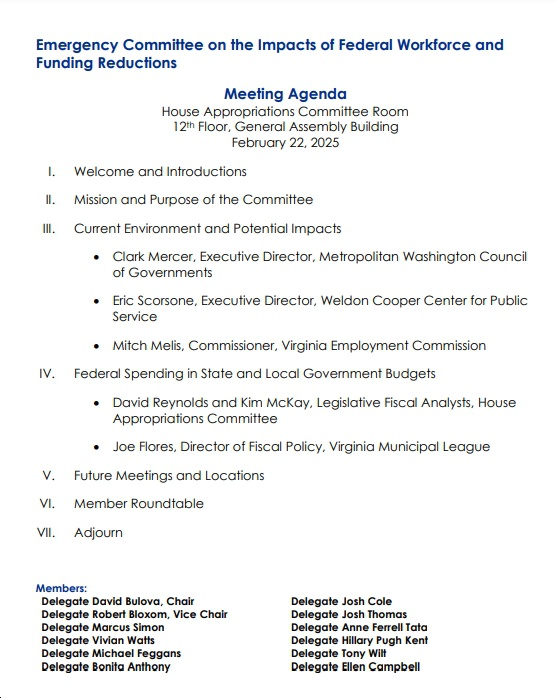
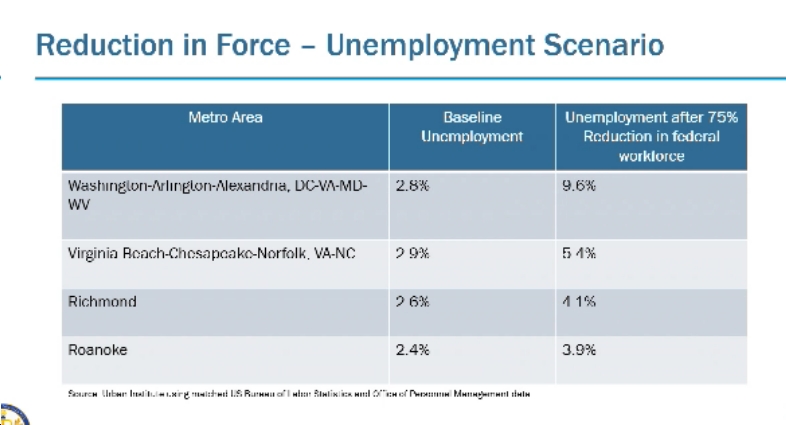
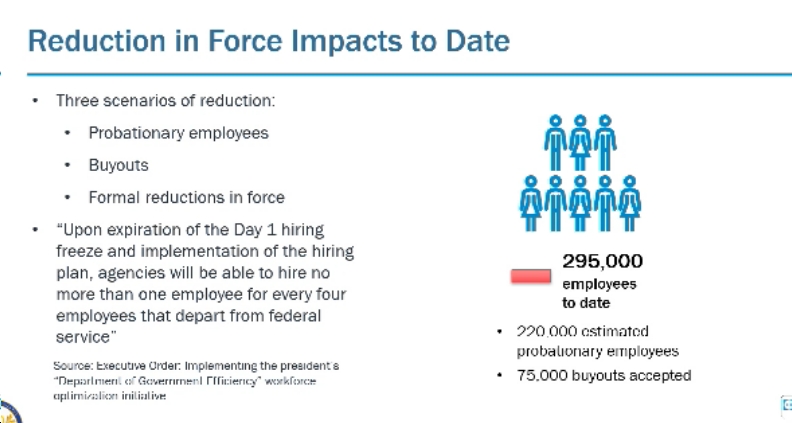
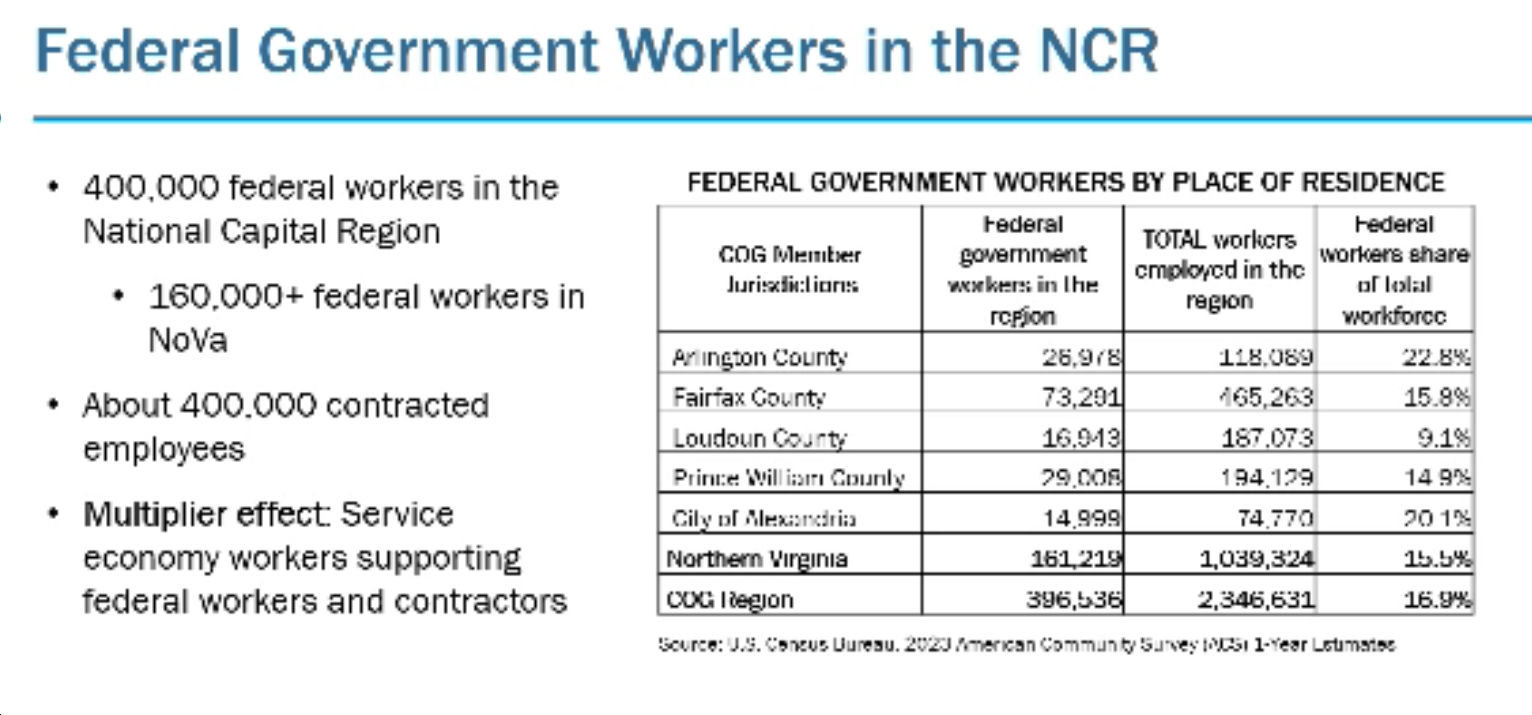
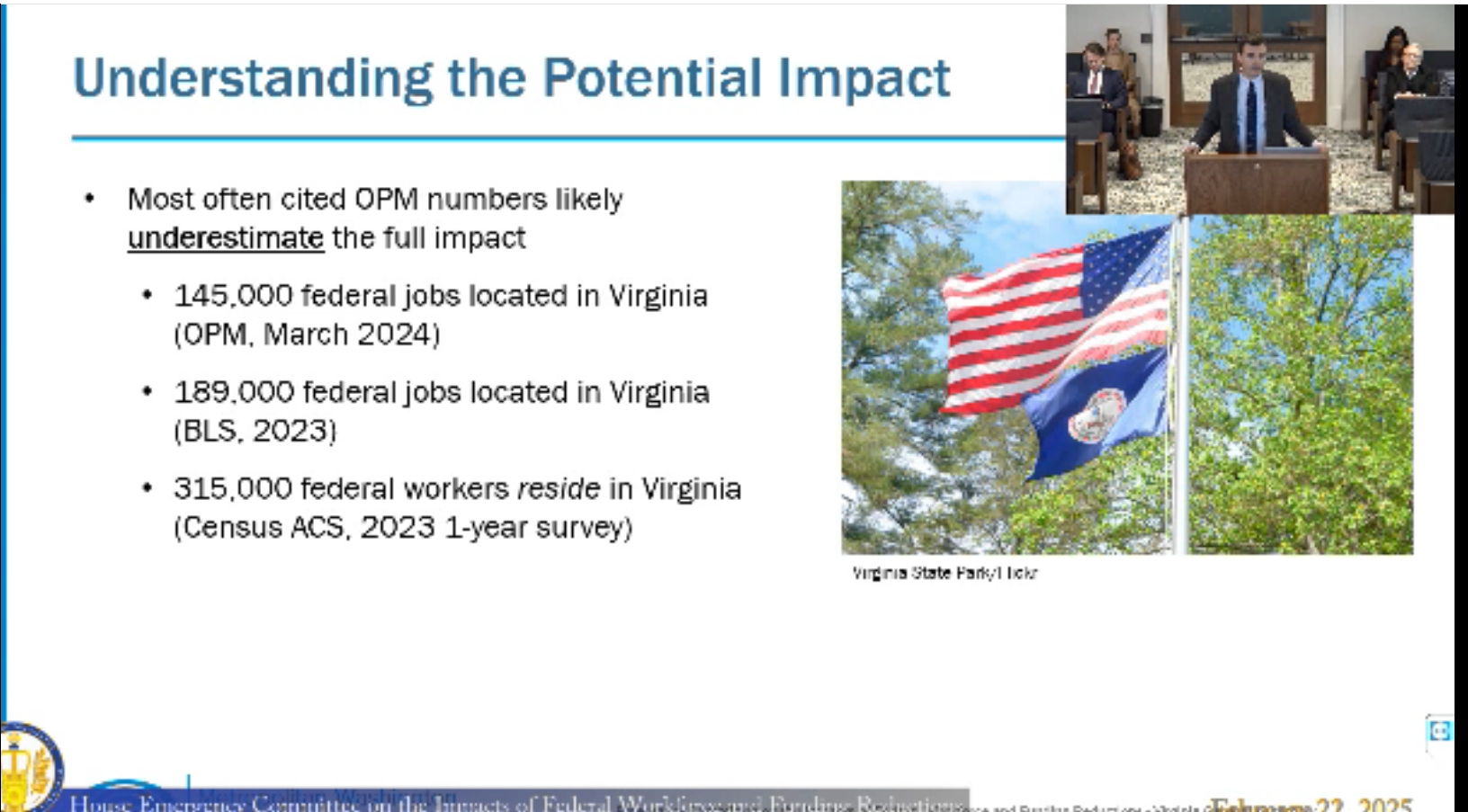
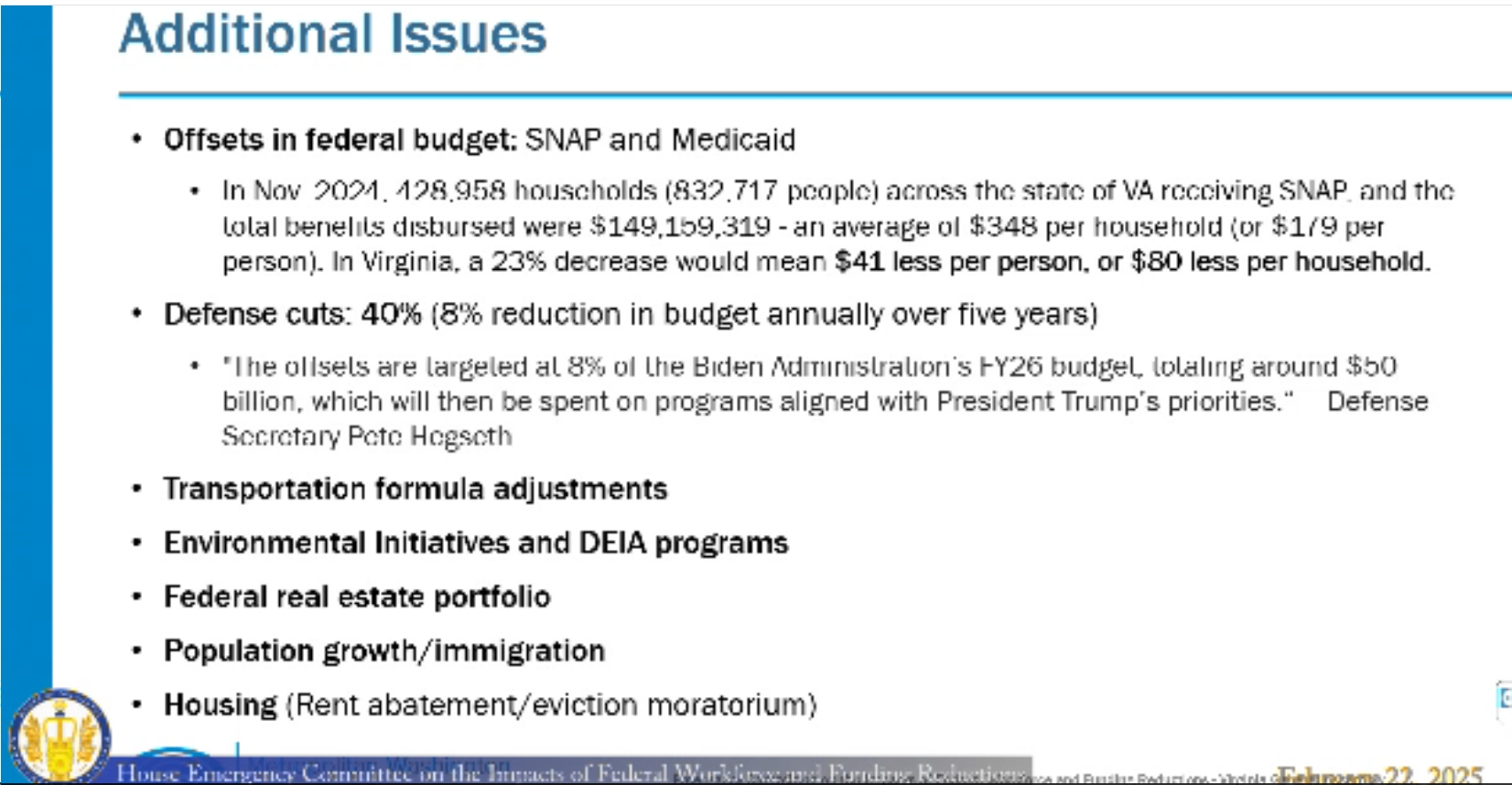
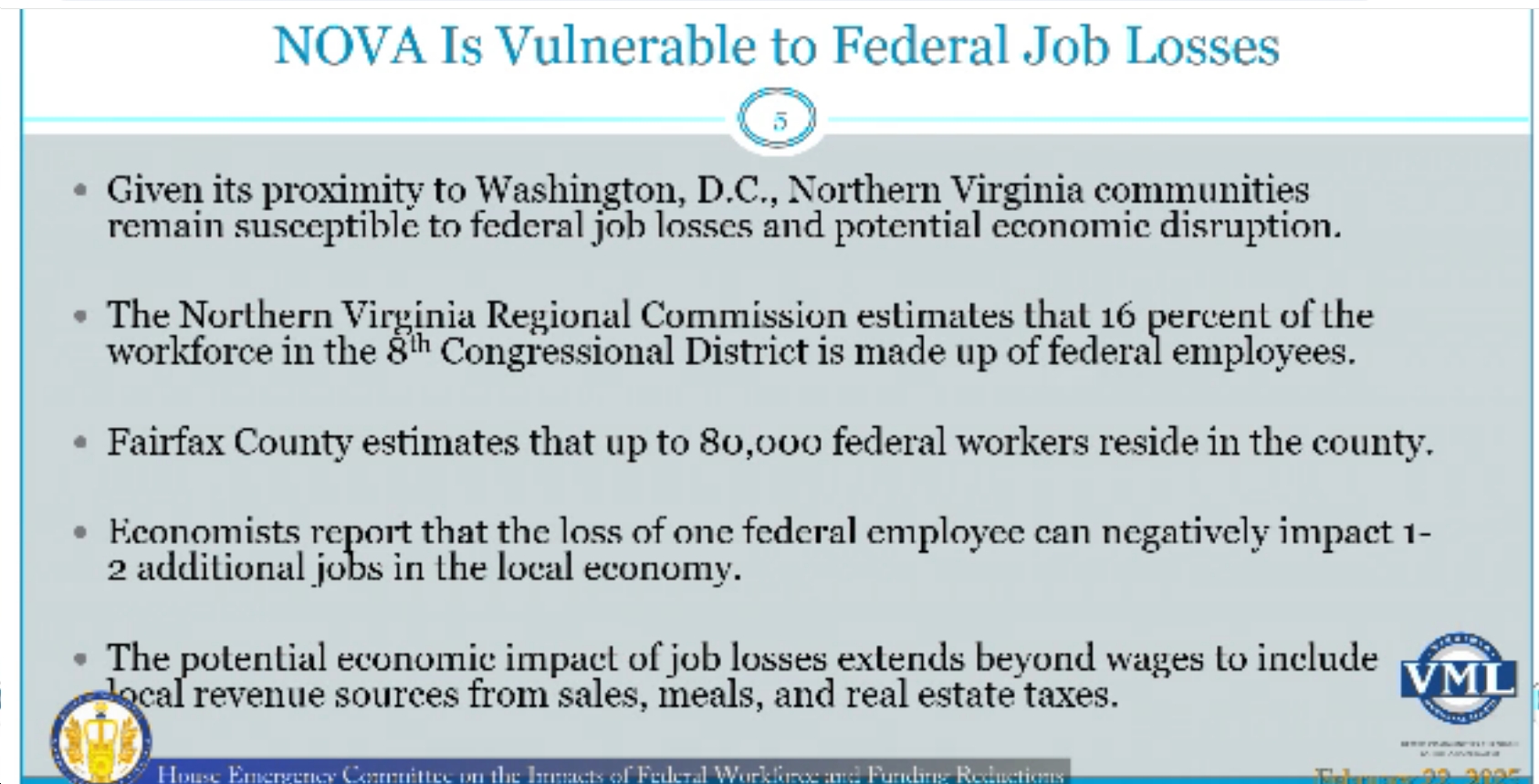
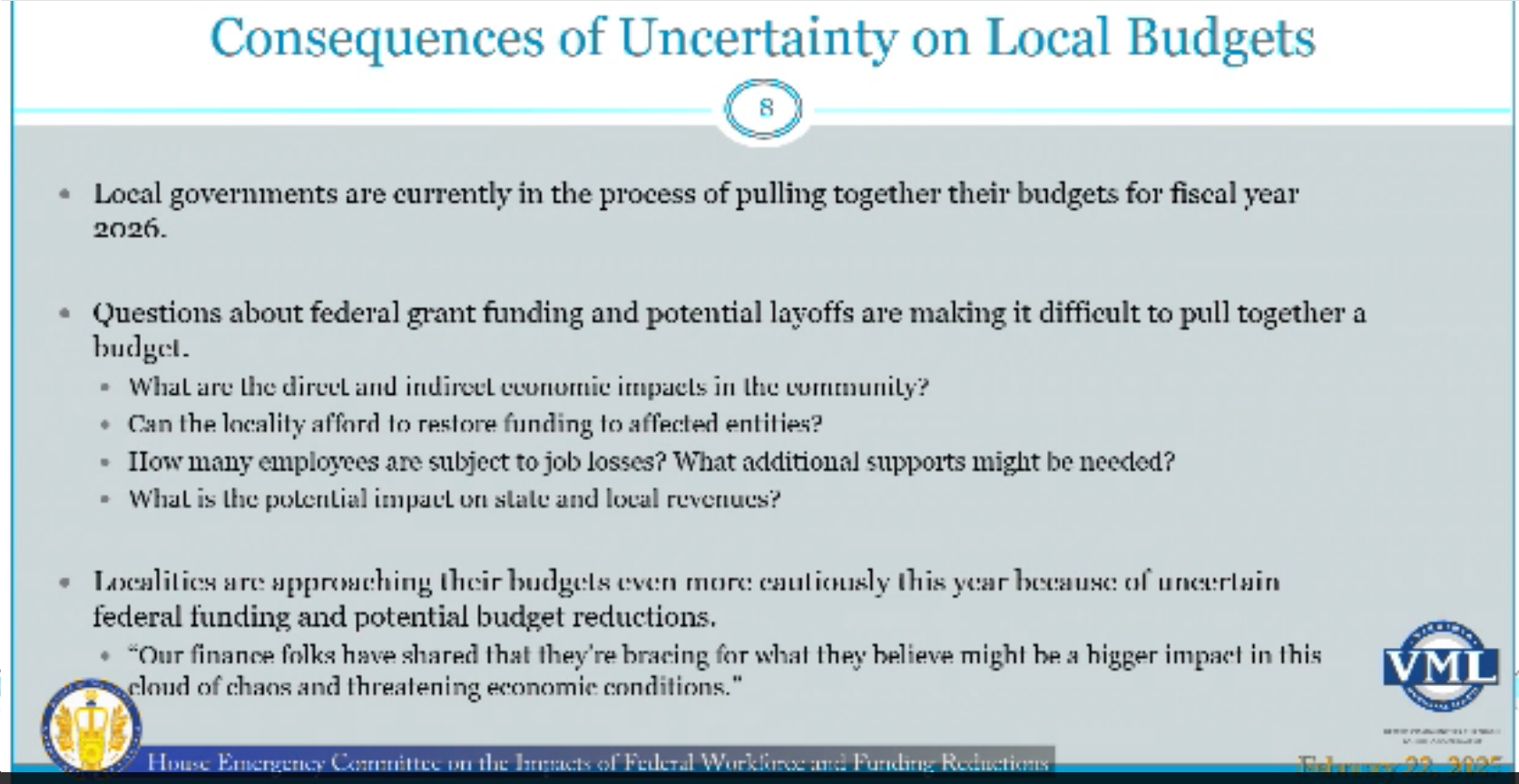
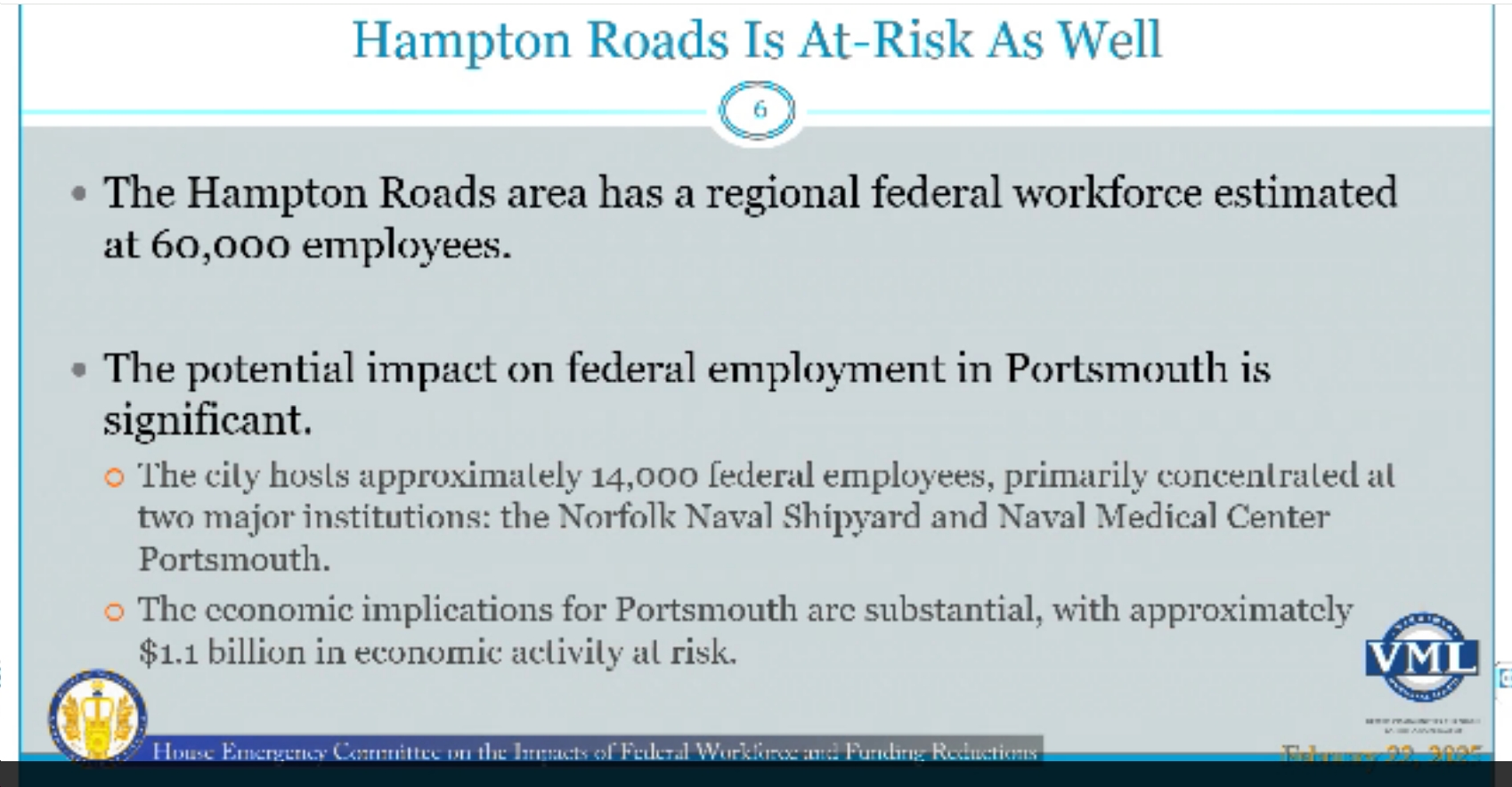
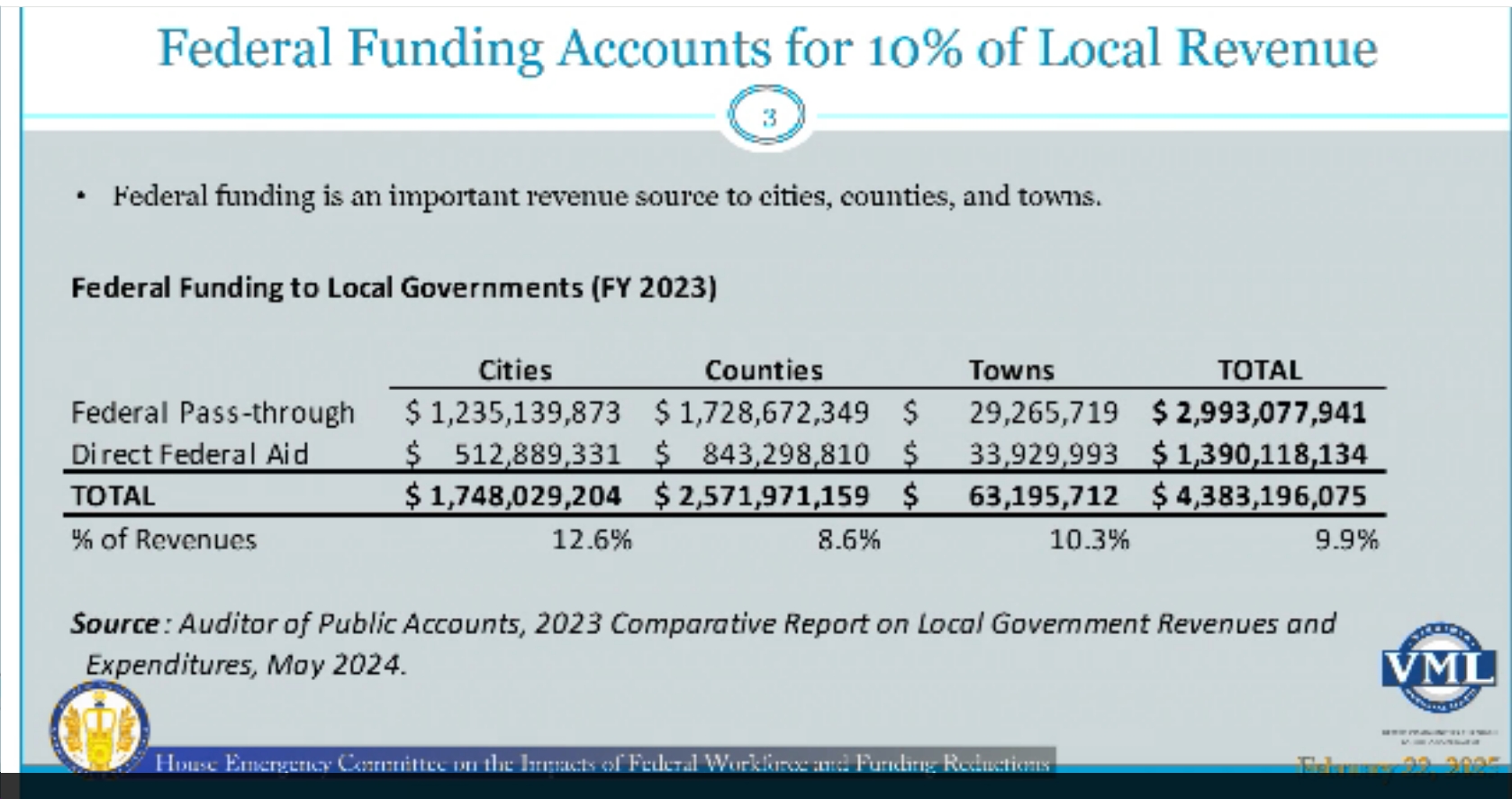




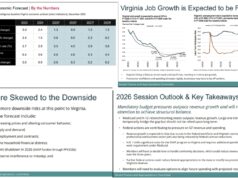
![Saturday News: “Trump Has a Recipe for War and Corruption, Not Peace”; “Trump and Mamdani’s White House Lovefest Leaves Trump Allies ‘Shocked'”; MTG Announces Resignation, “expects the MAGAs to lose the midterms, and for Donald Trump…to be impeached”; Thanks to Trump, “[VA’s] fiscal situation is not healthy”](https://bluevirginia.us/wp-content/uploads/2025/11/montage1122-238x178.jpg)

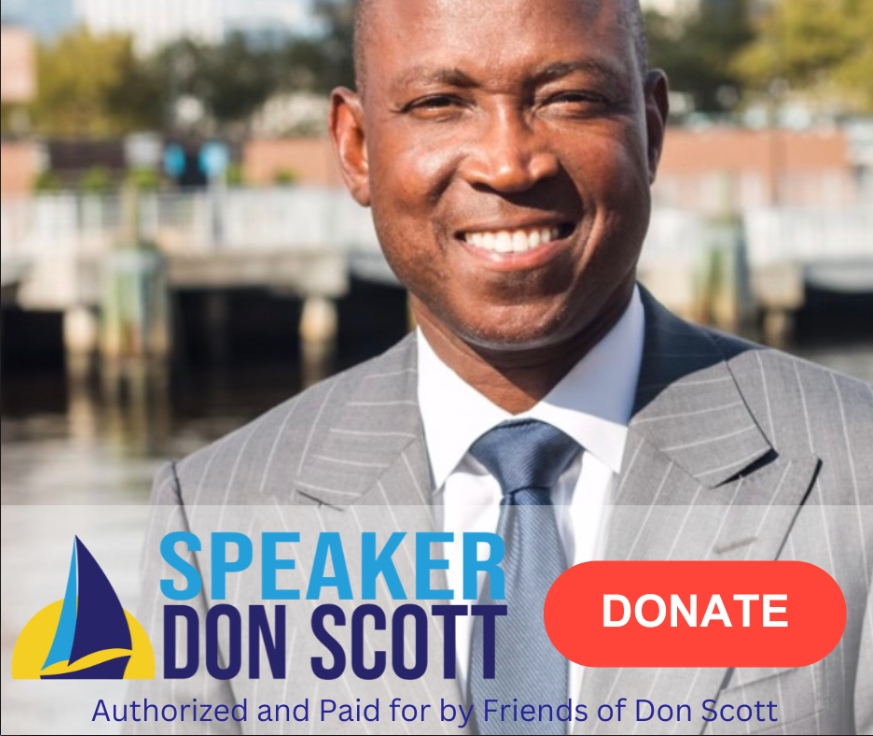
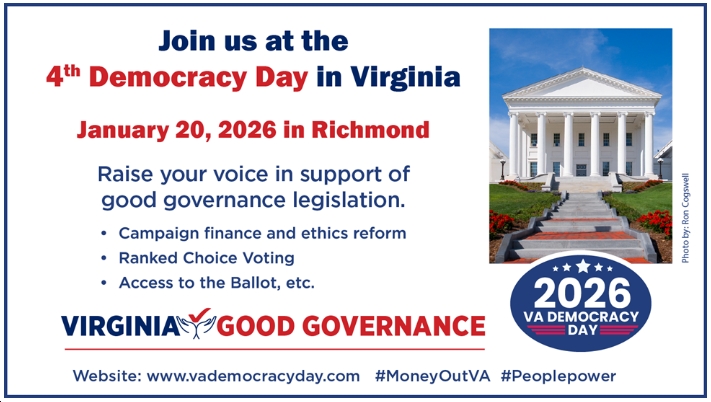




![Saturday News: “Trump Has a Recipe for War and Corruption, Not Peace”; “Trump and Mamdani’s White House Lovefest Leaves Trump Allies ‘Shocked'”; MTG Announces Resignation, “expects the MAGAs to lose the midterms, and for Donald Trump…to be impeached”; Thanks to Trump, “[VA’s] fiscal situation is not healthy”](https://bluevirginia.us/wp-content/uploads/2025/11/montage1122-100x75.jpg)